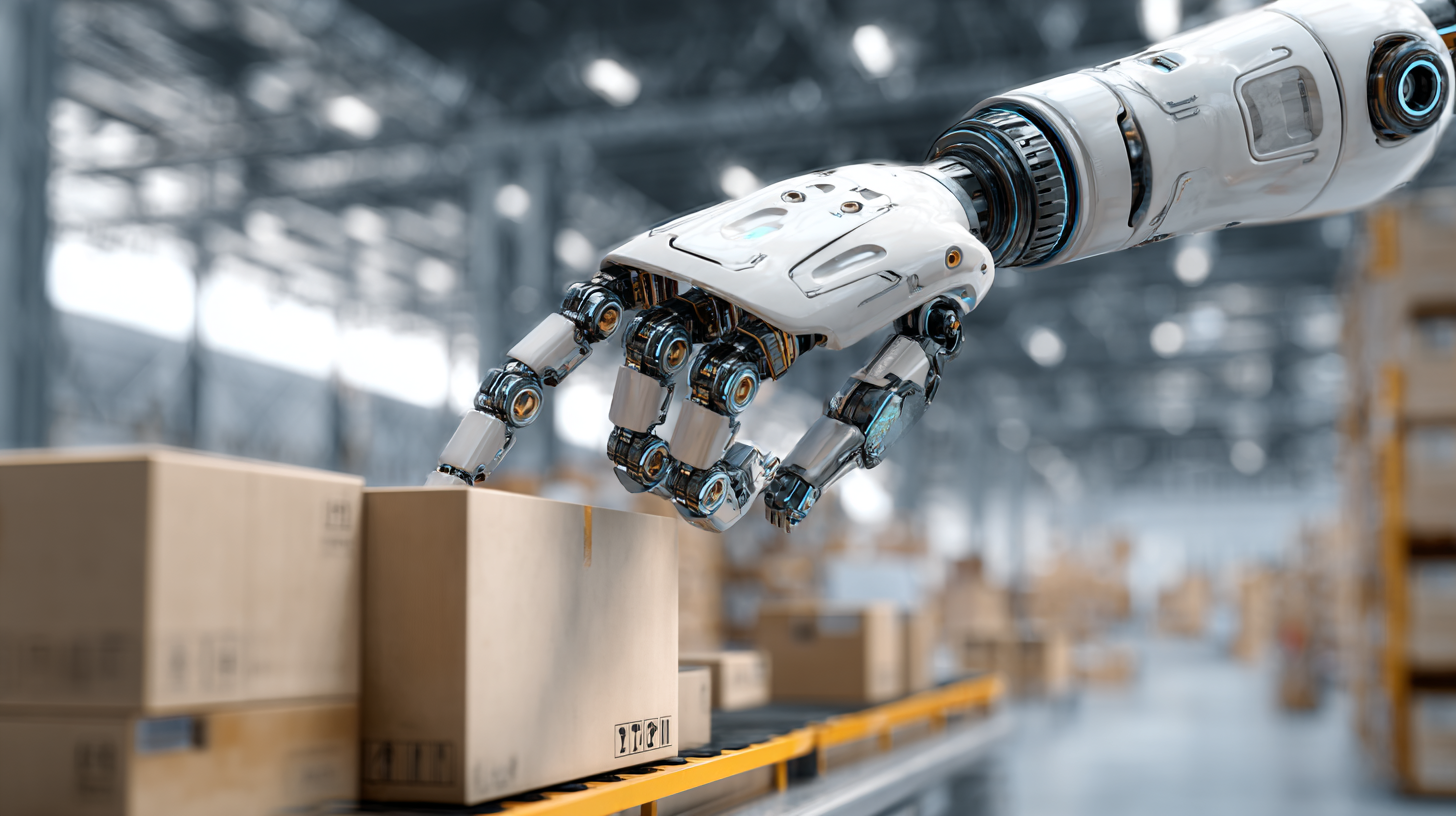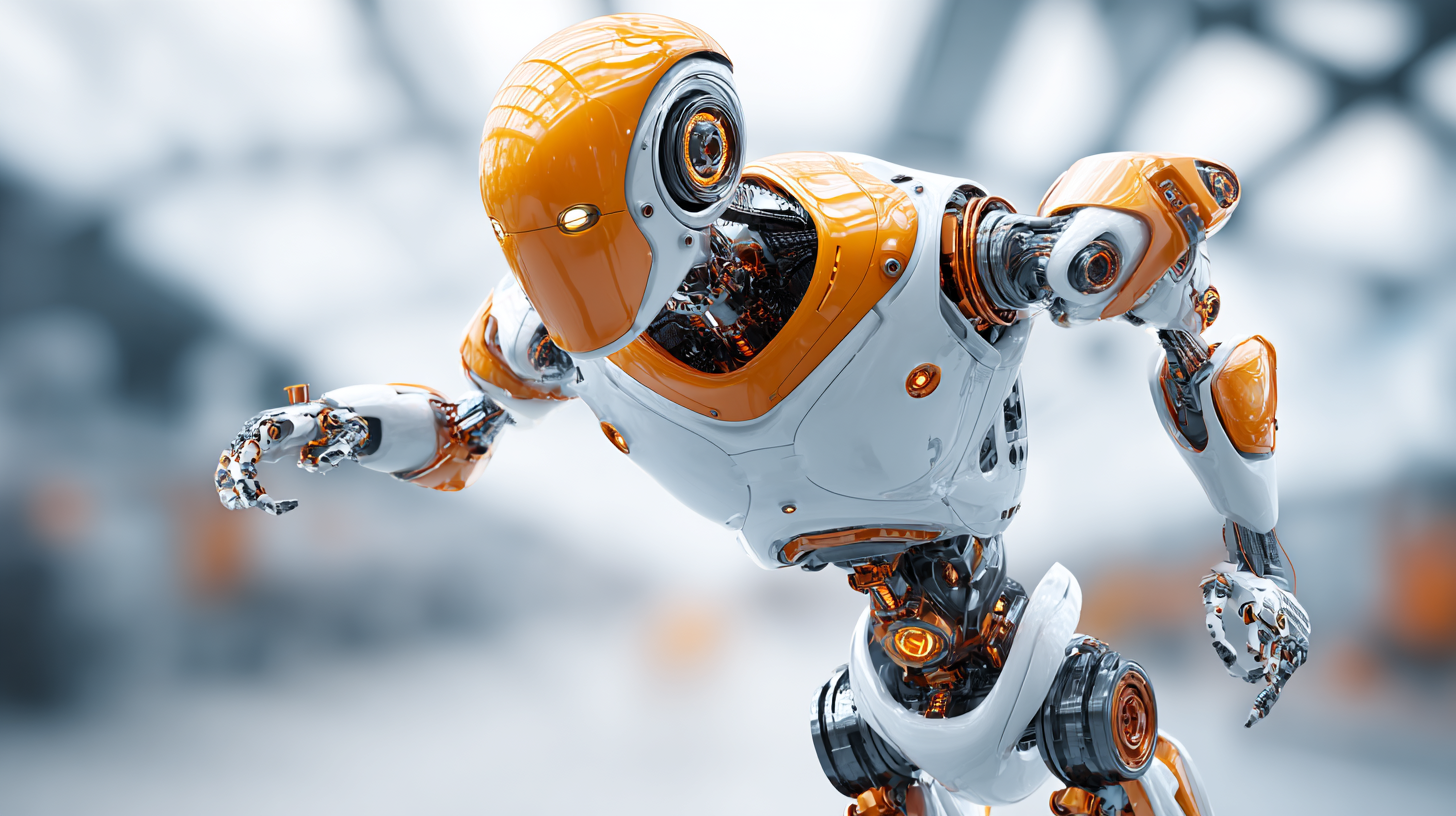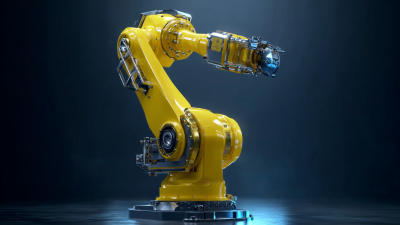Taking Custom Design to New Levels
PROUD TO BE PART OF THE BRIN FAMILY OF COMPANIES

OTHER BRIN LOCATIONS
Brin Glass Company | Minneapolis, MN
St. Germain’s Glass | Duluth, MN
Heartland Glass | Waite Park, MN
As industries increasingly embrace automation, the introduction of AMR robots is revolutionizing supply chain efficiency and redefining future industry trends. According to a recent report by the International Federation of Robotics, the global market for collaborative robotics, including AMR robots, is expected to reach $12 billion by 2025, growing at an annual rate of over 30%. These autonomous mobile robots enhance operational capabilities by streamlining logistics, reducing human error, and optimizing inventory management. In addition, a study from McKinsey highlights that companies employing AMR technology in their supply chains can increase productivity by up to 30%, significantly lowering operational costs. This transformative impact of AMR robots not only underscores their importance in contemporary supply chains but also points to a future where the integration of advanced automation technology will be crucial for maintaining competitiveness in a rapidly evolving market landscape.

Autonomous Mobile Robots (AMRs) are revolutionizing supply chain efficiency by leveraging advanced technologies like artificial intelligence (AI), computer vision, and sensor fusion. According to a recent report by McKinsey, the integration of AMRs can lead to a 20-30% increase in operational efficiency within warehouses. These robots are designed to navigate complex environments, transporting goods with precision while minimizing human intervention. By automating tasks such as picking, packing, and inventory management, AMRs help to reduce labor costs and improve accuracy, allowing companies to focus more on strategic decision-making.
Tips for successfully integrating AMR technology into your supply chain include conducting a thorough analysis of your operational needs and selecting the appropriate AMR that aligns with your goals. Additionally, continuous training for staff is crucial to fully leverage the capabilities of AMRs, ensuring that human workers and robots can collaborate seamlessly. A report by ABI Research indicates that by 2025, the AMR market is expected to surpass $11 billion, highlighting the importance of staying updated with technological advancements.
Moreover, AMRs are not just limited to traditional warehouses. Their applications in various sectors, including retail and manufacturing, demonstrate their versatility. For instance, companies utilizing AMRs reported a reduction in order fulfillment time by up to 50%, illustrating their potential to transform supply chain dynamics. Embracing AMR technology can position organizations at the forefront of industry trends, ensuring competitiveness in an evolving market landscape.

Autonomous Mobile Robots (AMR) are revolutionizing supply chain operations by significantly reducing operational costs and associated risks. These advanced robots can navigate complex environments and handle tasks such as inventory management, order fulfillment, and transportation without constant human oversight. Their ability to operate continuously and efficiently minimizes downtime, leading to streamlined processes that directly lower labor costs and boost productivity.
Moreover, the implementation of AMR technology mitigates various risks within supply chains. By automating repetitive tasks, businesses can decrease human error and enhance safety, particularly in environments where hazardous materials are handled. The integration of AMRs also allows for real-time data collection and analysis, providing organizations with valuable insights to make informed decisions and adapt to changing market demands swiftly. In this way, AMR robots not only offer cost savings but also foster a more resilient supply chain capable of withstanding disruptions.
Integrating Autonomous Mobile Robots (AMR) into existing supply chain systems offers a transformative approach to enhancing efficiency and productivity. Organizations looking to successfully implement AMR technology should begin by assessing their current workflows. A thorough analysis will help identify bottlenecks and areas where automation can provide the most significant benefits. By mapping out processes and engaging with frontline employees for insights, companies can determine the optimal deployment of AMRs tailored to their specific needs.
Once the assessment is complete, best practices for integration involve gradual implementation and ensuring flexibility within the system. Organizations should start with pilot programs to test AMRs in controlled environments before scaling up. This allows for adjustments based on real-time feedback and minimizes disruptions to existing operations. Additionally, involving cross-functional teams can foster collaboration, ensuring that the technical and operational aspects of AMR integration align seamlessly. Continuous training and support for staff are crucial, as they will play a vital role in the coexistence of human workers and robotic systems, leading to smoother adoption and greater long-term success.
| Dimension | Description | Impact (%) | Trend Prediction (2025) |
|---|---|---|---|
| Processing Speed | Increase in the speed of goods processing due to automation. | 30% | Higher efficiency with AMRs integrated. |
| Labor Costs | Reduction in labor costs through automation. | 25% | Further reductions expected as adoption grows. |
| Inventory Accuracy | Improved accuracy of inventory management through real-time tracking. | 40% | Continued improvements with enhanced technology. |
| Operational Flexibility | Ability to adapt to changing supply chain demands quickly. | 20% | Greater flexibility expected with advanced integration. |
| Customer Satisfaction | Enhanced customer satisfaction due to quicker and accurate deliveries. | 35% | Expected to improve as services evolve. |
The integration of Autonomous Mobile Robots (AMRs) in supply chains is not only transforming operational efficiency but also paving the way for innovative trends that will shape future industries. One notable trend linked to AMR technology is the increased focus on automation and artificial intelligence. As AMRs become more sophisticated, they are capable of performing complex tasks such as inventory handling and sorting, which streamlines workflows and reduces human error. This shift towards intelligent automation allows companies to optimize resource allocation and improve accuracy, leading to enhanced overall performance.

Another significant trend is the rise of data-driven decision-making. AMRs equipped with advanced sensors and analytics capabilities generate vast amounts of data that can be utilized for real-time monitoring and predictive analysis. Businesses are increasingly leveraging this data to foresee demand fluctuations, optimize inventory levels, and improve supply chain resilience. Consequently, organizations embracing AMR technology are gaining a competitive edge by making informed decisions that respond promptly to market dynamics.
Lastly, sustainability is becoming a core focus within supply chain innovation, driven by the efficiencies that AMRs enable. With their energy-efficient design and ability to minimize waste, AMRs contribute to a greener supply chain. Companies are now prioritizing eco-friendly practices, reflecting a broader commitment to sustainable development while meeting consumer demand for environmentally responsible products and services. As the landscape evolves, AMR technology will continue to play a crucial role in shaping a more innovative, efficient, and sustainable supply chain.
The integration of Autonomous Mobile Robots (AMR) into supply chains is significantly reshaping performance metrics across the industry. As warehouse automation gains momentum, AMR robots are becoming essential tools that enhance operational efficiency. By optimizing tasks such as inventory management, order fulfillment, and transportation within warehouses, these robots reduce labor costs and minimize human error, leading to improved output and accuracy in supply chain operations.
Furthermore, measuring the impact of AMR robots on supply chain performance highlights several key metrics, including throughput, lead time, and overall equipment effectiveness. The rise in automation has shown that productivity can significantly increase as AMR technology allows for continuous operation, reducing downtime in logistics processes. As organizations increasingly rely on data analytics to assess performance, the contribution of AMR robots will become even more critical in driving future industry trends, making them a focal point for businesses aiming to stay competitive in a rapidly evolving market.






Taking Custom Design to New Levels

Brin Glass Company | Minneapolis, MN
St. Germain’s Glass | Duluth, MN
Heartland Glass | Waite Park, MN

Fabricator
Inside Sales and Client Support Manager
Glass Handler – 1st Shift